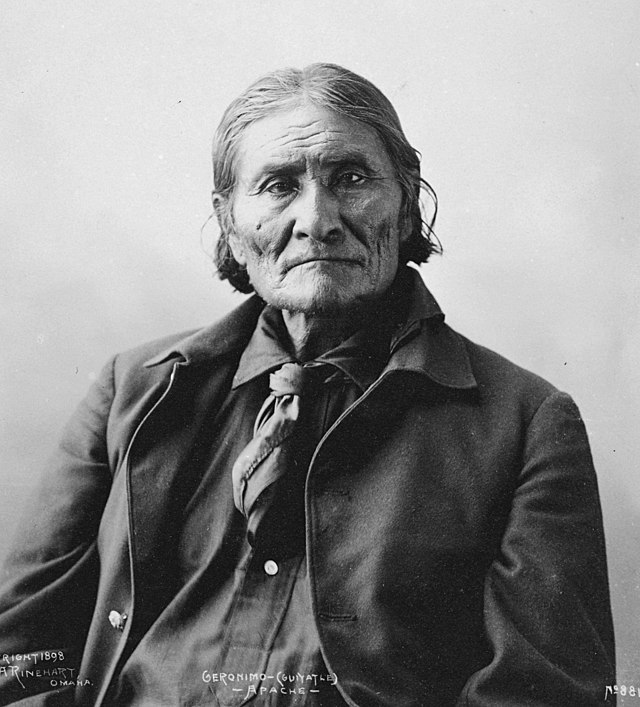Content deleted Content added
Tags: Mobile edit Mobile web edit |
Tags: Mobile edit Mobile app edit Android app edit |
||
Line 27: '''Geronimo''' ({{lang-apm|Goyaałé}}, {{IPA-ath|kòjàːɬɛ́}}, {{lit|the one who yawns}}; June 16, 1829 – February 17, 1909) was a prominent leader and [[medicine man]] from the Bedonkohe band of the Ndendahe [[Apache]] people, but he wasn't a chief (nantan), he was a shaman (di-yin). From 1850 to 1886, Geronimo joined with members of three other Central Apache bands{{snd}} the Tchihende, the Tsokanende (i.e. the so called Chiricahua) and the Nednhi{{snd}}to carry out numerous raids, as well as fight against Mexican and U.S. military campaigns in the northern Mexico states of [[Chihuahua (state)|Chihuahua]] and [[Sonora]] and in the southwestern American territories of [[New Mexico Territory|New Mexico]] and [[Arizona Territory|Arizona]]. Geronimo's raids and related combat actions were a part of the prolonged period of the [[Apache Wars|Apache–United States conflict]], which started with the American In 1886, after an intense pursuit in northern Mexico by American forces that followed Geronimo's third 1885 reservation breakout, Geronimo surrendered for the last time to Lt. [[Charles B. Gatewood|Charles Bare Gatewood]]. Geronimo and 27 other Apaches were later sent to join the rest of the Chiricahua tribe, which had been previously exiled to [[Florida]].{{sfn|Debo|1996|p=268}} While holding him as a prisoner, the United States capitalized on Geronimo’s fame among non-Indians by displaying him at various fairs and exhibitions. In 1898, for example, Geronimo was exhibited at the Trans-Mississippi and International Exhibition in Omaha, Nebraska; seven years later, the [[Bureau of Indian Affairs|Indian Office]] provided Geronimo for the inaugural parade for President [[Theodore Roosevelt]]. He died at the [[Fort Sill]] hospital in 1909, as a prisoner of war, and was buried at the Fort Sill Indian Agency Cemetery, among the graves of relatives and other Apache prisoners of war. | |||
 Article Images
Article Images